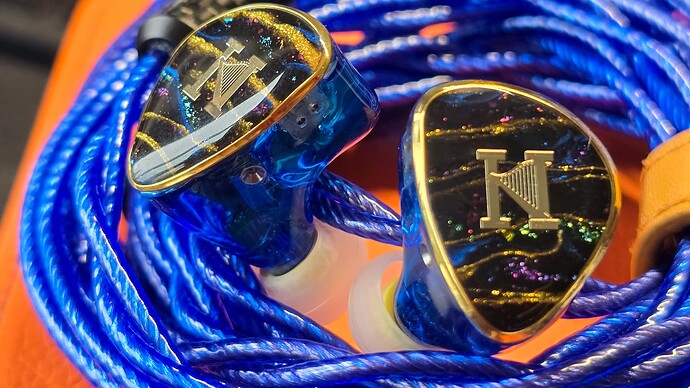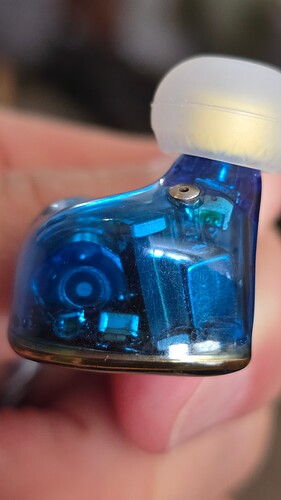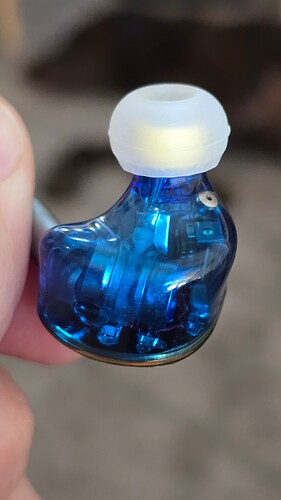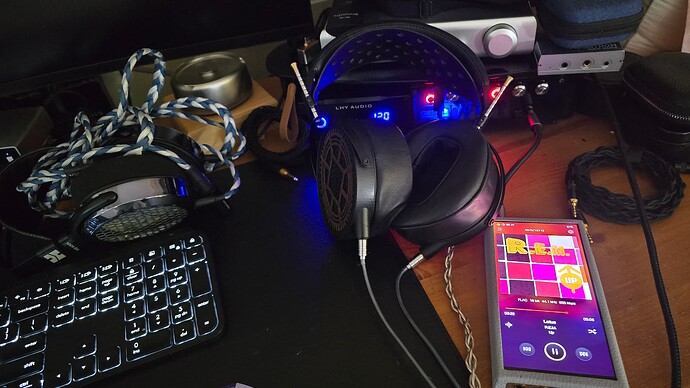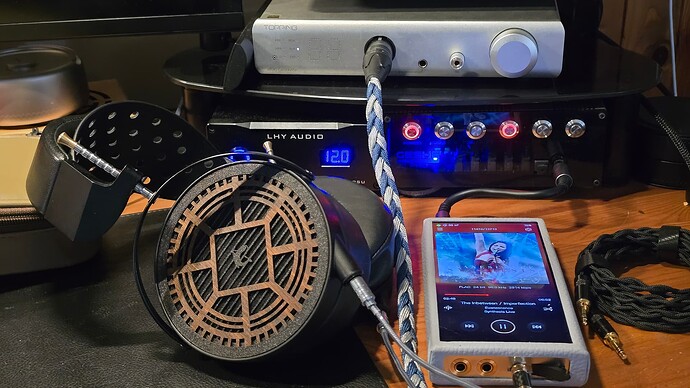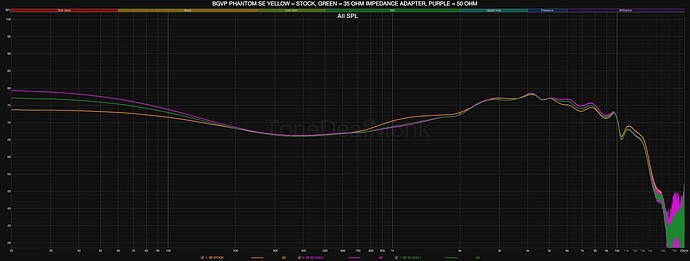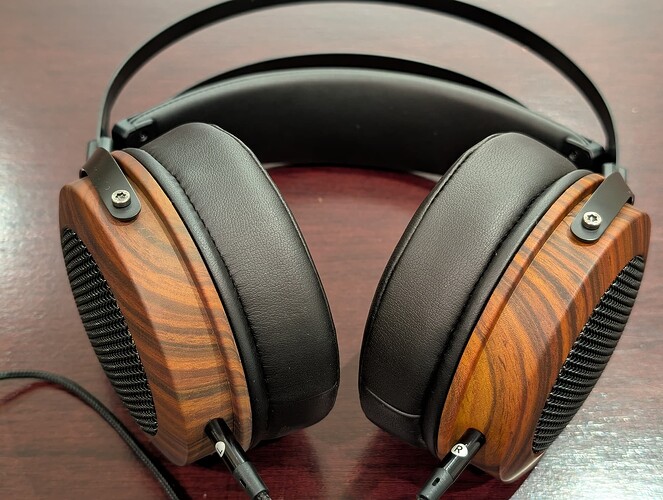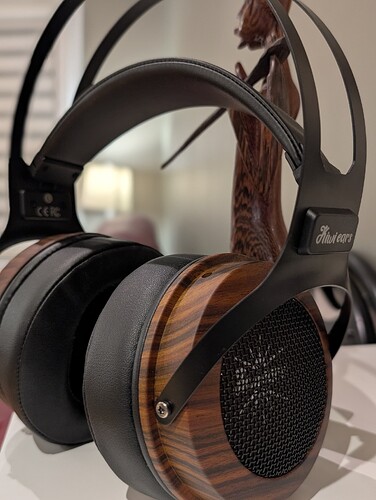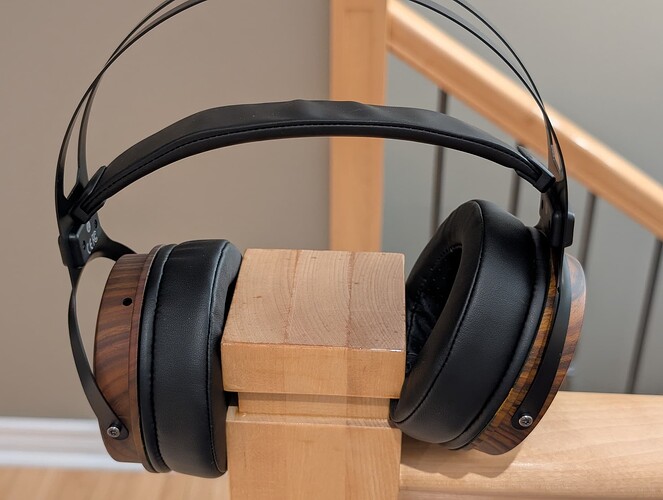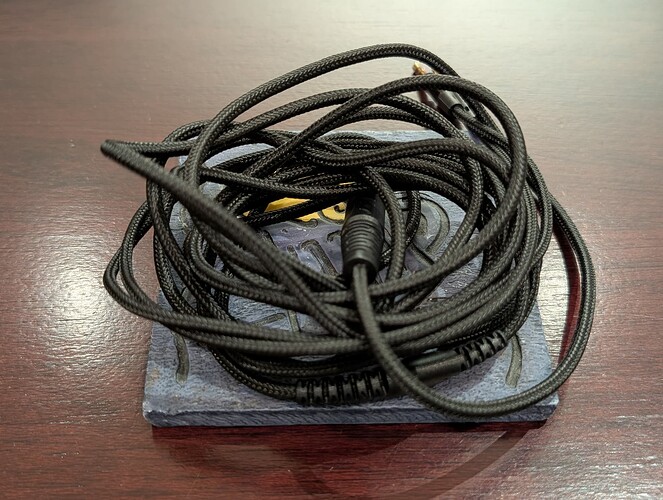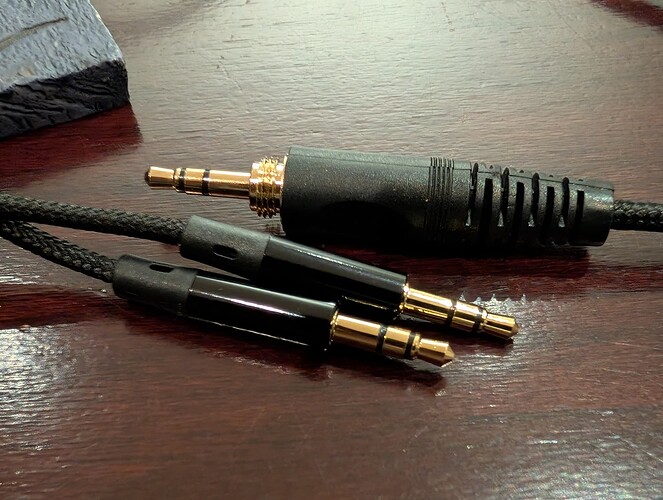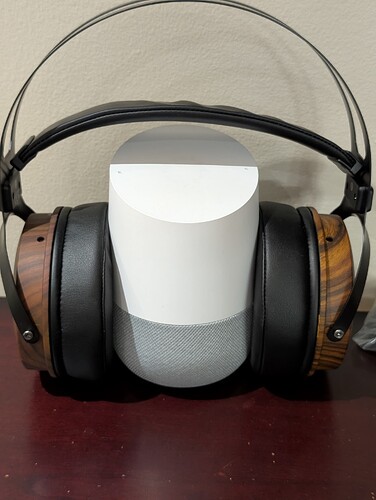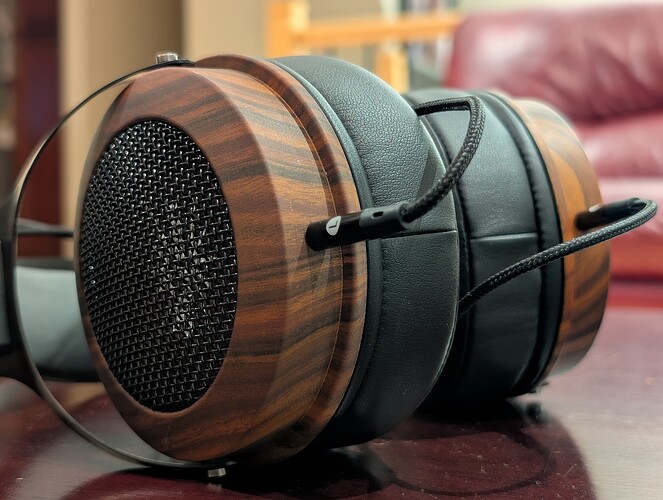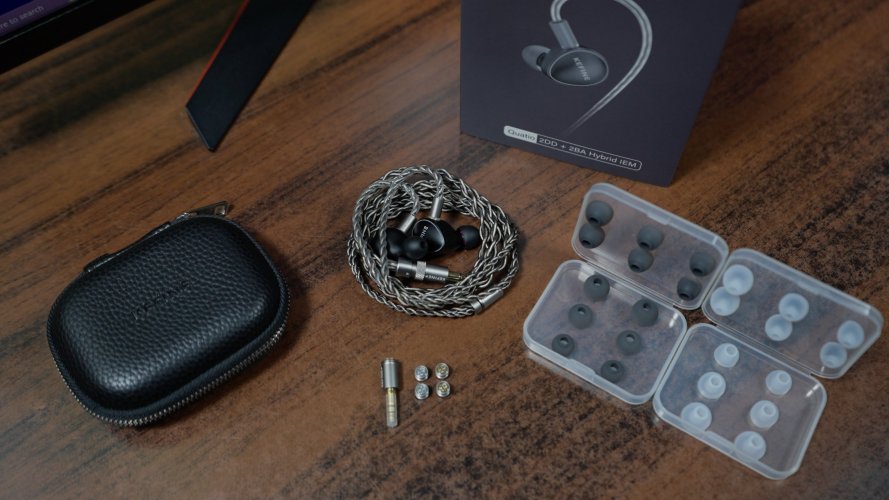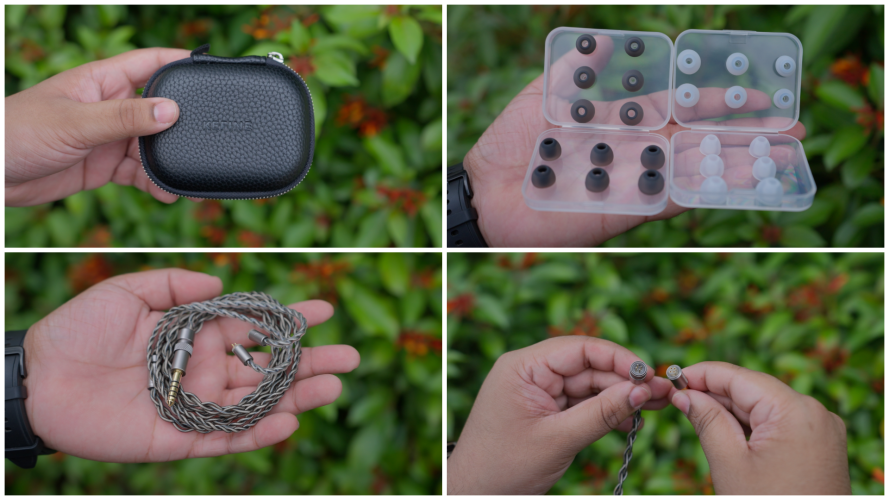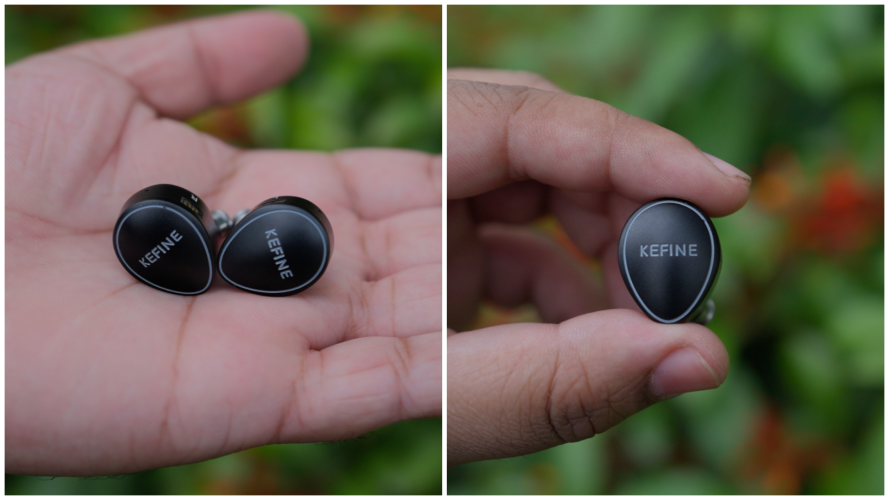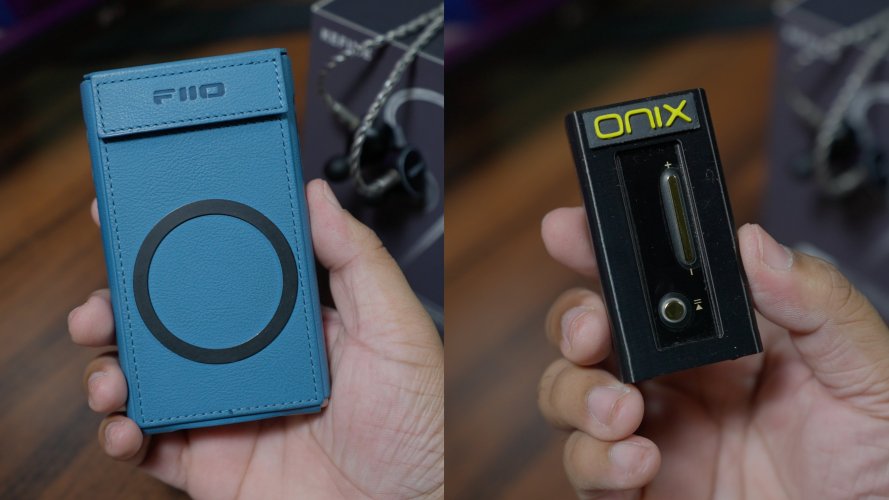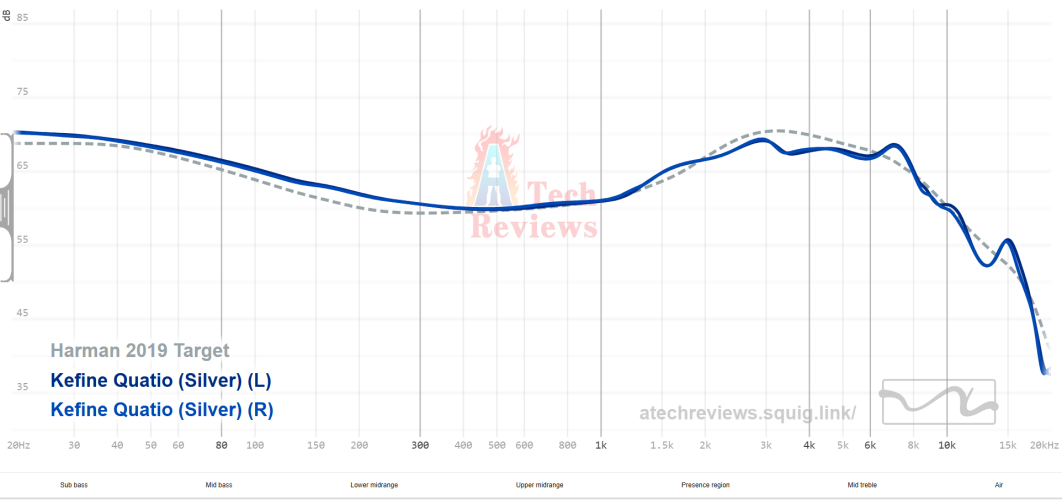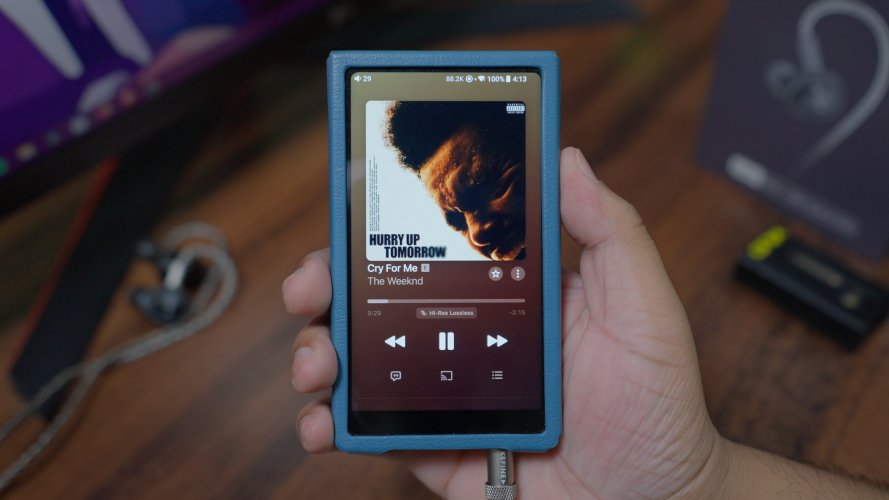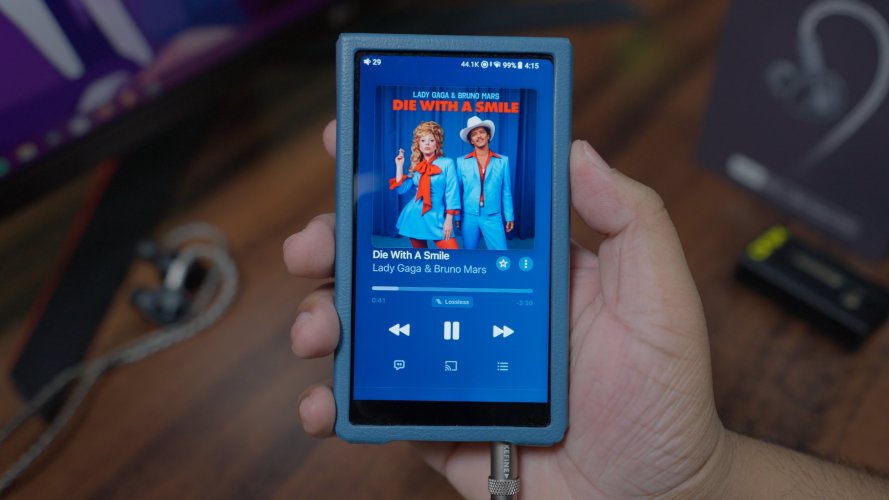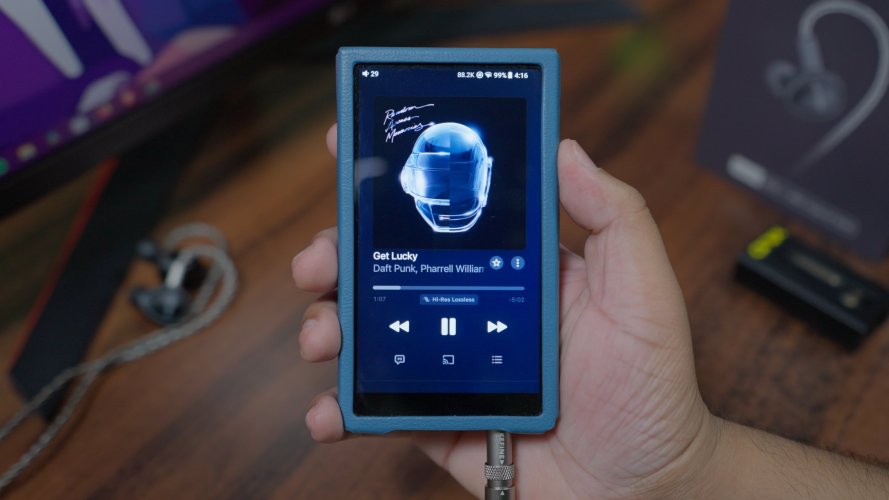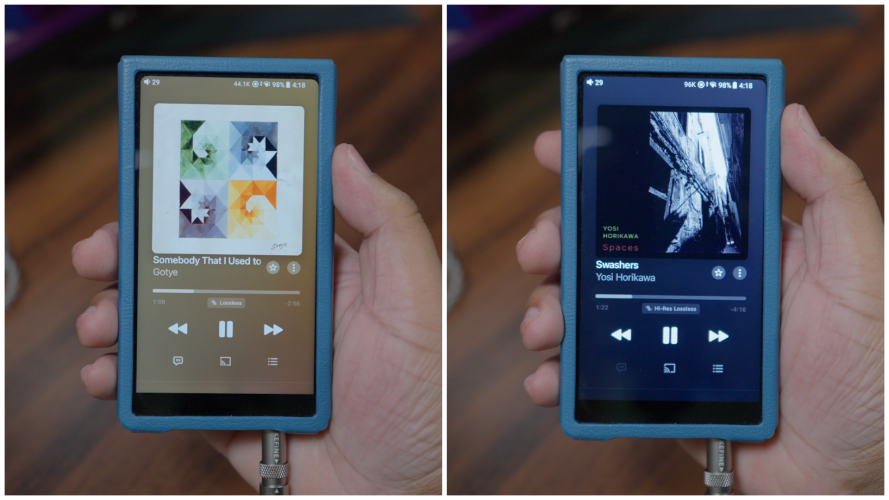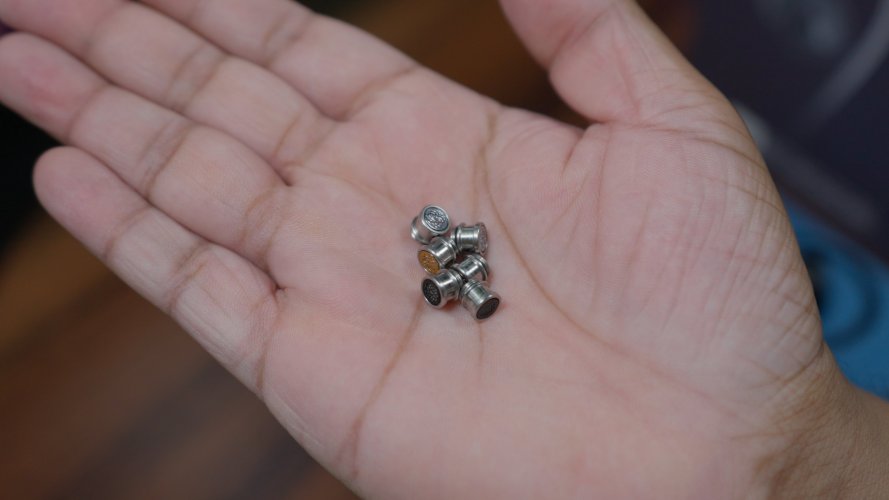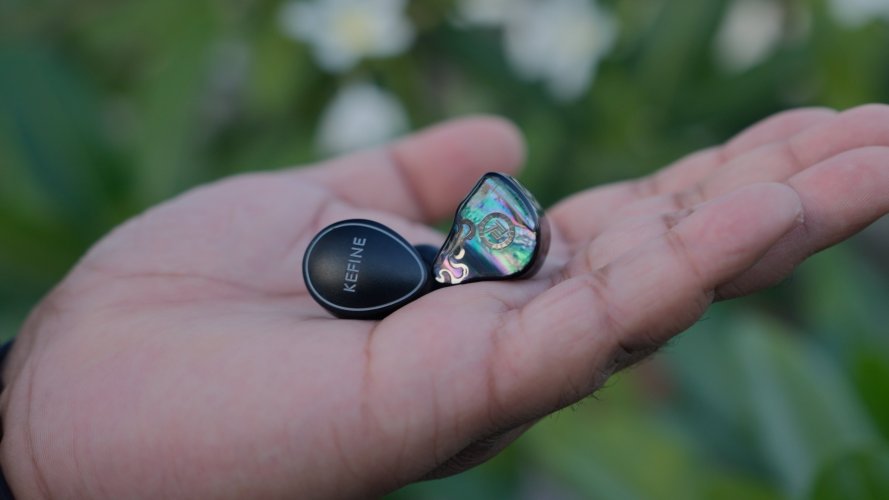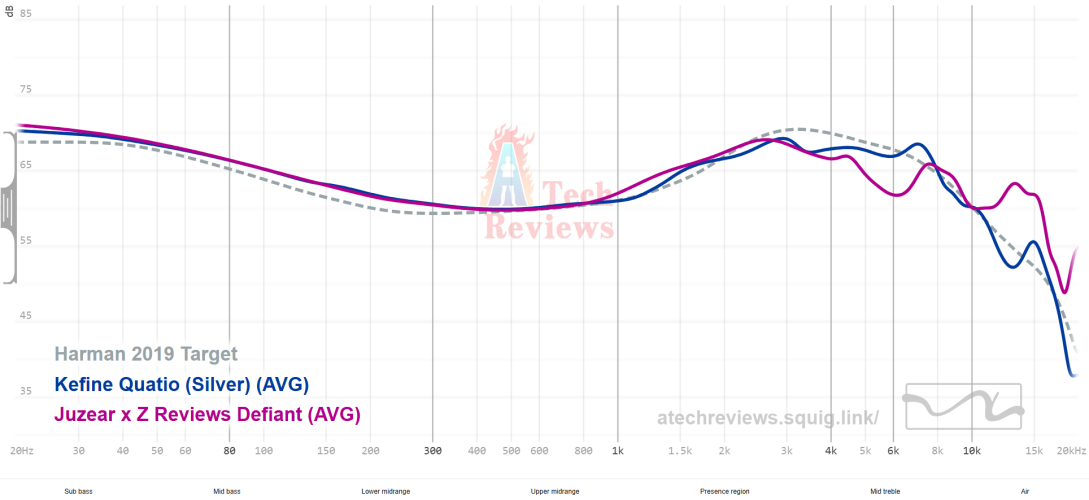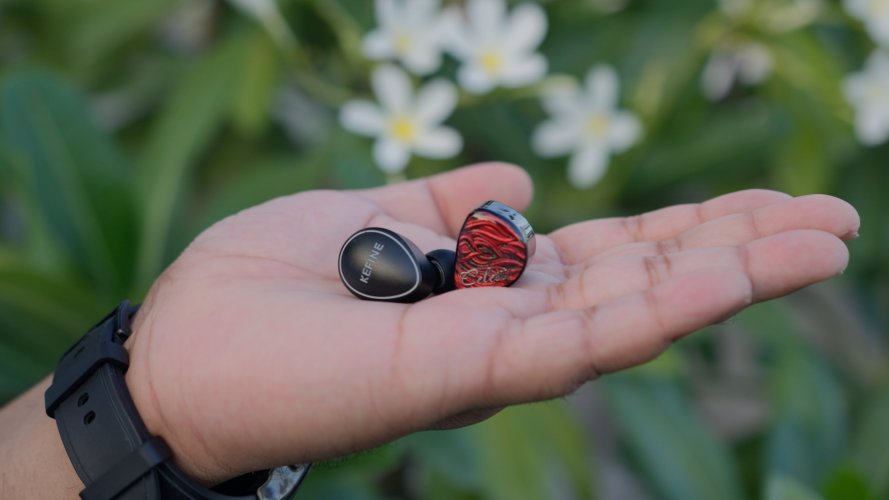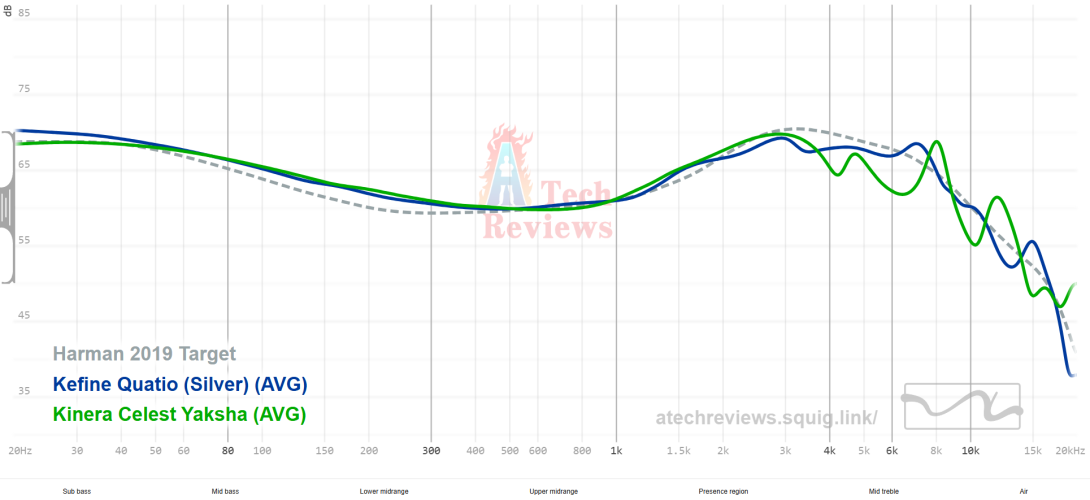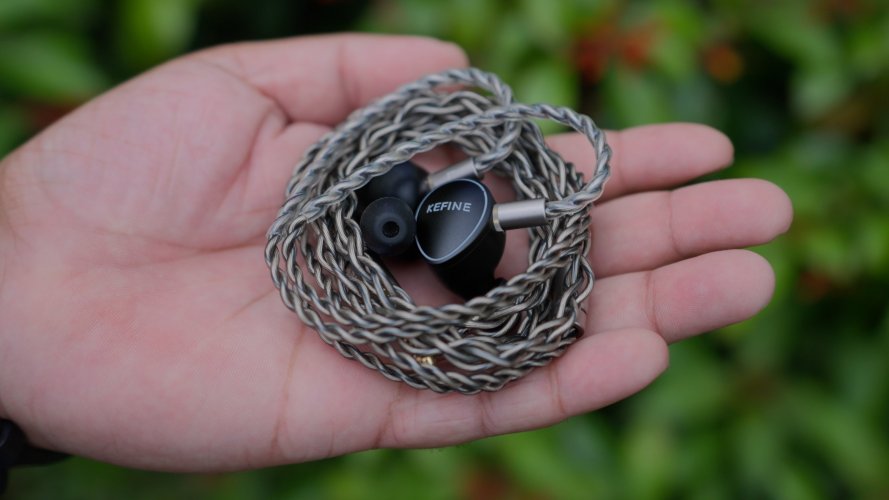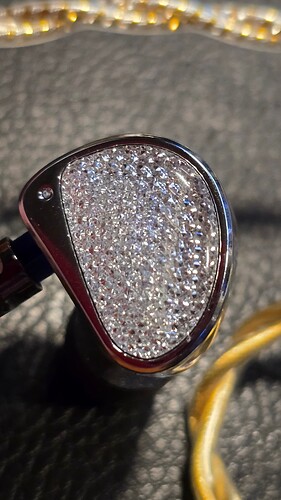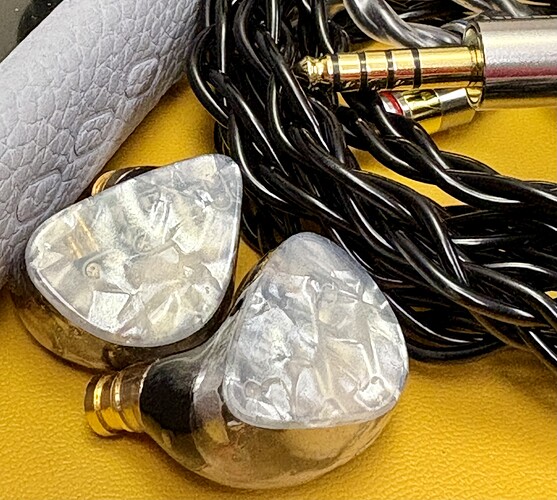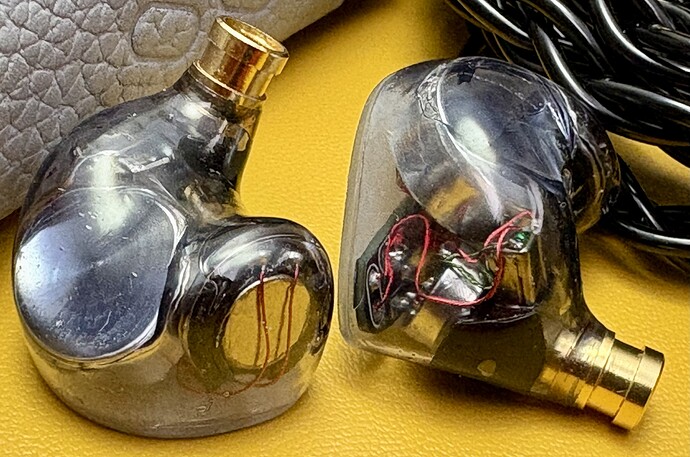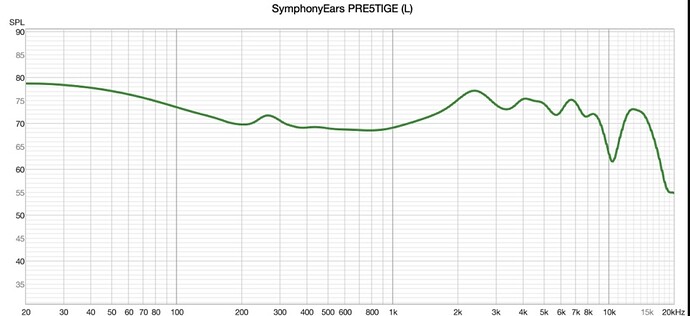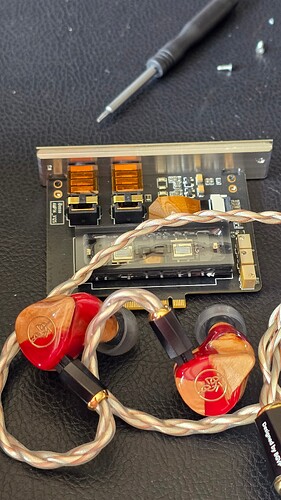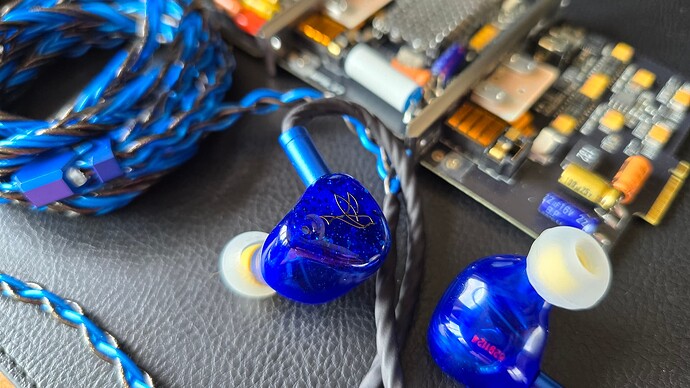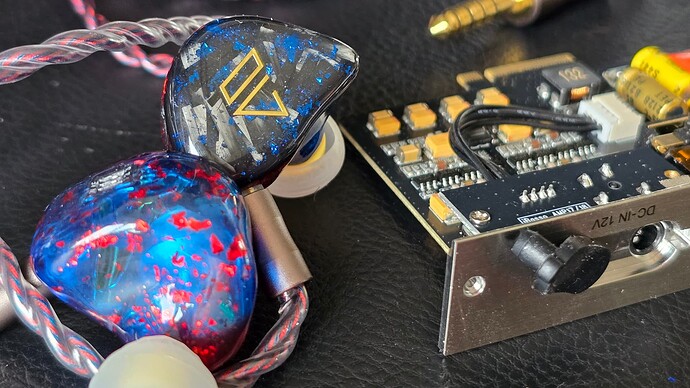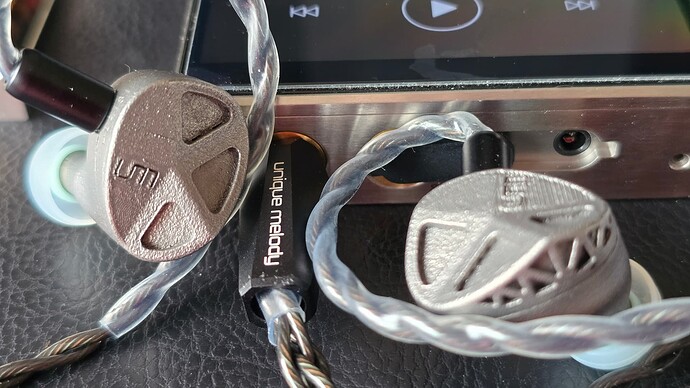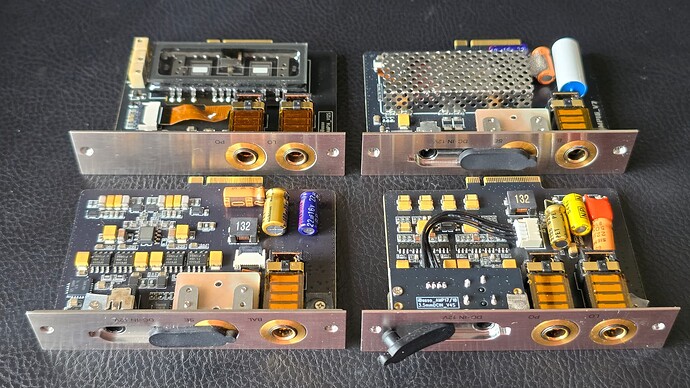Well color me impressed the ECB80 has tickled my fancy and I am sure glad the Canucks will listen to this gem.
I really like the Quatio’s conservative overall sound signature which is similar to the Delci and the Klean. By “conservative” I mean that Kefine stuck to their house tuning. That was a good decision since the Quatio is Kefine’s first multi-driver IEM.
The Quatio absolutely loves wide bore eartips in order to bring out the best technical performance and and to bring out clearer macro and micro details. Narrow bore eartips do occlude things. Three wide bore eartips which I tried work equally well, so the choice is simply for comfort. I find that the JVC Spiral Dots and the Tangzu Tang Sancai Wide Bore and the TRI Clarion eartips work equally well.
The new Baroque Stage tips are fantastic as well probably my new favorite.
It was a headphones test night , but now I am chilling with the BGVP PHANTOM SE with my new favorite tuning with a 40 ohm impedance adapter and damn!
Hopefully I’ll be picking up a set tomorrow from our logistics box ![]()
Oh sweet! Thats great news. Wicked IEM
Do Baroque Stage tips come with an IEM? ![]()
Ah i thought you meant the Phantom
Solomon really looks fantastic as a shell and tuning, but I swear I’m done with IEM purchases. I’m enjoying what I have and I’m happy. Good review, 10x ![]()
Kiwi Ears Altruva – More for Less
Preamble:
The Kiwi Ears Altriva is a full-sized open-back headphone featuring a single custom-developed 50mm dynamic driver. At $69 USD, the Altruva does bring much to the table for its asking price.
When looking at the Kiwi Ears over-ear headphone lineup, just a few dollars separate the majority of the offerings, with just the $39 Division and the $349 Atheia being the outliers.
The Altruva, according to the Kiwi Ears site, is tuned to emulate the precision of studio monitors, without a mention of which specific model(s) they are targeting. Tuning-wise, the Altruva offers a balanced presentation with an audible mid-bass emphasis. It has an open sound that is not hyper-detailed but more natural in that respect. I did find that pairing the Altruva with a warmer source resulted in too much mid-bass prominence and impacted the overall sonic balance negatively.
The Altruva does like power, especially when compared to the IEMs I was listening to just prior. A more neutral source is recommended, as a warmer source tends to overemphasize the mid-bass prominence, although it never becomes boomy.
SPECS:
Driver Unit: 50mm Dynamic Driver
Impedance: 32 Ohm
Sensitivity: 98dB ± 3dB
Frequency Response: 20Hz – 40kHz
Plug : 3.5mm + 6.35mm adapter
Cable Length: 3m
Build & Fit:
-Attractive-looking headphones.
-Comfortable fit with thicker pads.
-Built quite well, but the materials do seem a little less than premium.
-The cable is of great length, 3m, and good quality, but microphonics were audible for the cable and the headphone housing.
-Comfort was above average.
-Retail presentation is basic but attractive.
SOUND:
Bass:
-Goes relatively deep but sometimes is overshadowed by the mid-bass.
-Moderate speed with a snappy mid-bass.
-Mid-bass prominence is obvious.
-Good but not class-leading definition in sub-bass.
-Mid-bass is more defined than sub-bass.
-Deep bass thump when called for.
Midrange:
-Balanced presentation.
-Macro detail focused.
-Clear and open with some added warmth.
-Pleasing timbre and balance.
-Transients had a sharp attack and natural decay.
-Layering and separation are adequate.
-Pinna gain is moderate, and there is little to no harshness.
Treble:
-Treble is moderately extended.
-Pleasing sparkle and air.
-Detail is macro over micro, with some micro-details still present.
-Laid back at times but clean and expressive when the track calls for it.
The overall sound is balanced, with a noted mid-bass emphasis over sub-bass. The Altruva is source-sensitive, and pairing it with a warmer source can exaggerate the mid-bass at times, which may overshadow the low end and obscure the treble to some extent. Using a more neutral source returned the sonics to a balanced presentation with now more apparent sparkle and air.
Layering and separation are well accomplished, the driver having enough of a quick response and control to accomplish this. Does well with complex tracks.
IMAGING & SOUNDSTAGE:
-A moderately large-sized open soundstage
-Instrument placement is distinct, though not class-leading.
-Dimensions are more natural than exaggerated.
-Depth and, in particular, height are well presented.
CONCLUSION:
With the Altruva Kiwi Ears have produced a good-sounding and budget-friendly over-ear headphone. When paired with a neutral source capable of sufficient clean output, the Altruva did well even for longer listening sessions with its balanced sonics.
When the $70 price is considered, I believe the Altruva to be an impressive release. Good clean sound with all the open-back headphones’ soundstage characteristics. For many, the Altruva will be more than a capable introduction to the world of over-ear headphones
Man, for $69, the Altruva sounds like a total sleeper hit! ![]() That mid-bass punch with a touch of sparkle up top sounds like a fun tuning. Curious though, how does it handle fast-paced tracks? Can that driver keep up when things get chaotic?
That mid-bass punch with a touch of sparkle up top sounds like a fun tuning. Curious though, how does it handle fast-paced tracks? Can that driver keep up when things get chaotic?
Kefine Quatio - Excellent Iem at Excellent Price
Pros:
- Excellent accessories package
- Excellent cable
- Excellent build quality
- Simple and industrial design (Subjective)
- Nozzles provide an actual change in sound
- Good bass quality
- Good Mids
- Good treble bite
Cons:
- The presence region gets too much on bad recordings (Silver Nozzle)
- The extension in the upper treble could have been better
- Not the widest stage

Kefine Quatio Review - Excellent IEM At Excellent Price (Vs Celest Yaksha, Juzear Defiant)
Specs And Driver Configuration
- Driver configuration: 2 DD + 2 BA
- Sensitivity: 107 ± 3 dB
- Impedance: 32Ω
- Shell Material: CNC Aluminium
Before starting the review, I want to thank Kefine for sending this iem for a review.
Accessories Package
The accessories package is excellent for the price. Things provided in the box are 1. Zipper carry case 2. Four different types of tips 3. Cable with 3.5mm replacement termination 4. Two nozzles.
The carry case is very good, it’s built very well and feels premium. The cable is excellent too, it feels very premium and robust, easily one of the best cables provided in the segment. It also had the screw-down type interchangeable system, which is my preferred type of system. I also appreciate the generous selection of good-quality eartips included, great for newcomers to the hobby, since you can tip-roll to find the best fit and comfort.
Aesthetics and Build Quality
The aesthetics of the Quatio are clean, simple, and very professional. Now, if you’re a fan of loud and blingy faceplate designs, you might find this a bit boring. But if you’re into a minimalist and industrial look, this will be right up your alley.
The build quality is excellent, the shells are made out of CNC-machined aluminium, so they feel very robust and premium. They also have a nice heft to them, which adds to the overall sense of quality.
Fit and Comfort
The fit and comfort of the IEM are quite good. While the shape might look a bit awkward at first, it doesn’t cause any issues in terms of how they wear. The shells are teardrop-shaped with angled nozzles, which help provide a secure and stable fit. There are no wings or custom moulding on the shells, yet the fit remains surprisingly solid. That said, the shells do stick out of the ear a little. Comfort-wise, they’re excellent; I can wear them for hours without any fatigue or discomfort.
Sources Used
To test the Quatio, I used the Fiio JM21 and Onix XI1. Both paired very well with it and powered it without issues. I would suggest you to pair with with a warmer leaning dac amp.
Sound
I used the Final E-type tips for my sound testing. Let’s start by talking about the stock sound signature of the quatio, it has a very tastefully done V-shaped sound signature.
Bass
The bass on this set is very good; you won’t have any complaints with either the quality or the quantity. The bass profile leans more toward sub-bass than mid-bass, with a smooth transition between the two.
The sub-bass has very good texture and rumble, and the mid-bass thump and slam are also on point. The initial attack of the bass is crisp and well-defined, while the decay is slightly on the faster side, giving the bass a snappy and speedy character.
Mids
The mids are also well-tuned on this set. The mid-bass gradually transitions into the lower mids, adding a nice warmth and giving them enough heft and body to sound natural. The upper mids balance out the lower mids nicely, creating a cohesive and smooth presentation. Both male and female vocals sound very good here, with ample weight and extension.
The one area that’s a bit of an issue for me is the presence region; the 4k 6k range feels a bit too forward for my taste. On poorly recorded tracks, certain “S” and “Ch” sounds can come across as slightly sibilant.
Treble
The treble is also done very well. Its very smooth. The mid-treble has a nice bite to it and sounds quite incisive. After that, it gently rolls off into the air region. The extension is decent, though I do wish there was a bit more energy up top to make the overall sound signature feel more airy and open.
Detail Retrieval and Technical Performance
The detail retrieval is very good for the price. Despite the slightly mellow upper treble, micro-detail retrieval is good; it presents subtle nuances in tracks quite well. Macro-detail retrieval is also solid, with a dynamic and punchy presentation. The soundstage is decent, not the widest, but it never feels cramped. Instrument separation, layering, and imaging are all handled well, adding to the overall technical performance.
Nozzles
Nozzles actually make a difference in sound, you get two more distinct sound profiles. The nozzles are pretty easy to change, just srew to remove the old nozzle and screw on the new nozzle.
Let’s start with the gold nozzle . It makes the overall signature cleaner, more forward, and more intense. There’s a reduction in overall bass quantity, the bass shelf now follows the Harman target more closely and mid-bass is slightly reduced as well. The lower mids come across cleaner, but as a result, vocals, especially male vocals, lose a bit of weight and authority. The upper mids are slighly pushed forward, and the presence region is also elevated. These changes make the sound more intense. If you’re after more clarity and energy, the gold nozzle delivers, but for me, it can feel a bit too much.
The black nozzle is the opposite. It gives the sound a more relaxed, fun, and warmer presentation. The bass shelf is lifted, with both sub-bass and mid-bass slightly more emphasised. The upper mids around the 1.5k region are slightly pulled back, and there’s also a reduction in the presence region. Vocals sound a bit weightier and thicker with this nozzle. The black nozzle cuts down the intensity of the gold nozzle and provides a well-balanced, versatile tuning you can enjoy across genres.
Comparisons
Kefine Quatio Vs Juzear Defiant
The accessories included with both IEMs are quite good, but in my opinion, the Quatio has the edge. Its cable feels more premium, and it comes with a wider selection of eartips, which adds more flexibility for tip rolling.
Aesthetics are subjective. Defiant has a flashy, eye-catching faceplate that looks stunning, especially the rainbow version. In contrast, the Quatio opts for a more minimal and industrial design.
One area where the Quatio clearly wins is build quality. The metal shells feel more solid and premium compared to the Defiant.
Now, moving on to the sonic comparisons, both IEMs follow a V-shaped sound signature, but they execute it differently.
Bass quantity is similar on both sets. Quatio’s bass is snappier and faster, with better control and composure, while Defiant’s bass feels denser but tends to lose control on busier tracks, for example, in Limit to Your Love.
The lower mids on both have similar weight and body, but the upper mids on the Defiant are more forward compared to the Quatio. The presence region is slightly more relaxed on the Defiant, which makes vocals sound a bit smoother and less sharp than on the Quatio.
Treble presentation also differs Defiant has a noticeable boost in the air region, making it sound more airy. However, as I mentioned in the full review of the Defiant, it doesn’t come across as natural.
Detail retrieval is very close between the two, but I’d give a slight edge to the Quatio. As for soundstage, the Defiant offers a slightly wider stage.
Kefine Quatio Vs Celest Yaksha
The accessories are excellent on both. The stock cables are very good. Quatio comes with a swappable termination system, which is a great bonus, while Yaksha’s cable feels even thicker, sturdier, and more premium. So, I’d call this a tie.
Aesthetics follow the same story as with the Defiant; Yaksha has a more vibrant, colorful faceplate that stands out, while Quatio goes for a more basic, industrial look.
In terms of fit and comfort, I find the Quatio to be better. With the Yaksha, I had to tip-roll a bit to get a stable and secure fit.
Build quality is excellent on both. Although the Yaksha uses resin shells, they feel very solid and premium thanks to the filled resin construction. That said, Quatio still has the edge here; its all-metal build just feels more robust and high-end. You really can’t beat metal in this regard.
Now onto the sonic comparison. The Yaksha has slightly less sub-bass than the Quatio, while the rest of the bass shelf is quite similar. Quatio clearly wins when it comes to bass quality, the sub-bass texture and mid-bass thump are noticeably better, and the bass attack is crisper and more defined.
Lower mids are similar on both, but the upper mids are slightly more forward on the Yaksha. The presence region is more relaxed on the Yaksha, which means no sibilance or fatigue, but it also lacks some of the vocal texture and bite that the Quatio delivers.
Treble quantity is similar on both, but the Quatio’s treble has more incisiveness and better bite, making it sound more energetic and engaging. When it comes to detail retrieval and overall technical performance, the Quatio also takes the lead.
Conclusion
Kefine has done it again; they’ve created a well-rounded IEM that sounds great, is built well, and comes with a solid accessories package. It competes strongly within its price class and offers more flexibility in tuning thanks to the well-implemented interchangeable nozzle system, which provides two distinct sound profiles.
That said, there are a couple of flaws worth mentioning. The presence region (4k–6k) can be a bit too forward on poorly recorded tracks, and the extension into the air region could’ve been better. But if those two things don’t bother you, I can confidently recommend this set.
Wow fantastic teview and excellent comparisons well done
Thanks for the appreciation ![]()
I find it does pretty well with busier tracks. Not the best I have heard but for its price not bad at all.
None I’m aware of yet. The stage are a recent release, pretty sure they are currently a standalone product at present.
SYMPHONY EARS PRE5TIGE (PRESTIGE)
5 Driver Quadbrid IEM. $690.00 usd
- 1x 10mm bio-fiber dynamic driver for bass
- 1x 11mm bone-conduction driver
- 1x Sonion 26UA BA for midrange
- 1x Knowles 33518 BA for treble
- 1x 7mm magnetostat super tweeter
5-way passive electronic crossover network.
Preamble:
Thanks go out to Symphony Ears and Isaiah Schell for including the Canuck Audioholics in the Canadian review tour for his latest offering the SE Pre5tige (Prestige)
Tone Deaf Monk
Bennet Kelly
Kaye Dee
For those unfamiliar with Symphony Ears, the company is the blood, sweat, and, successes of Isaiah Schell.
Isaiah is an Engineering student at George Fox University USA.
Symphony Ears is his passion, and this journey for him started while still in High School.
You can read his full bio on the SymphonyEars website.
I have been fortunate to experience both of his previous releases the Tetrad, and Hexad.
The PRE5TIGE (hereafter Prestige) has just come off an 80 hour burn in, and the little bit of listening I squeezed in has me enthusiastically looking forward to lengthy listening sessions and completing this review.
![]() Retail Packaging:
Retail Packaging:
Symphony Ears is a low volume “made on demand” manufacture. If you are thinking to purchase, Isaiah may have a unit or two on standby and readily available, but be prepared to wait 2-4 weeks for your unit to be built and tuned.
Low volume manufacturing isn’t harmonious with purchasing large enough volumes of custom printed packaging to keep costs reasonable, so….
The Prestige arrives in a plain black box. Inside is a nice pocketable carry case, sized well enough to hold the Ear Pieces, 4.4mm cable, and six pair of ear tips, and, a hand signed serial number card.
The tour unit is serial #2.
Pros and Cons:
![]() Vented 3D resin shells with metal nozzles are medium large to large in size. Considering the driver sizes and count, they are about as compact as possible.
Vented 3D resin shells with metal nozzles are medium large to large in size. Considering the driver sizes and count, they are about as compact as possible.
Drivers are easily visible and identifiable through the clear shells.
They fit my larger ears well with a mid or slightly deeper insert depth.
They have a good nozzle angle for me allowing for a secure anchor and seal.
![]()
![]() The shells are solid and well built, the internals are tidy and neat and appear to be securely placed.
The shells are solid and well built, the internals are tidy and neat and appear to be securely placed.
But, the final finish on the shell exterior is a bit shy of perfect.
There are no rough edges or misaligned seams, but the exterior surface lacks some final polish finesse.
When I first noticed it, I thought they were wrapped in plastic protective wrap, and tried to find the edge so I could remove it. That’s the best way I can describe it.
I asked Isaiah about the shell finish.
He 3D prints his own shells and is continuously working to improve the final finish.
As a university student he’s not likely able to shell out big bucks on new equipment, and is doing his best with what he has.
You do get an individually produced hand finished product instead of something mass produced.
![]() Stock, Black Cat, Nicechek branded cable is a zinc copper alloy offering, terminated 4.4mm.
Stock, Black Cat, Nicechek branded cable is a zinc copper alloy offering, terminated 4.4mm.
It’s a little stiff but not unruly, ear hooks fit, and support, the ear pieces very well.
Metal fittings, and a chin toggle that slides easily but also stays in place.
An above average budget cable.
![]() Impressive driver configuration
Impressive driver configuration ![]() .
.
![]()
![]() Easy to drive with a basic dongle off a phone, but needs a capable source to scale well.
Easy to drive with a basic dongle off a phone, but needs a capable source to scale well.
![]() Source Devices:
Source Devices:
I’m not going to go into detail on each source device.
I tried every source device I own, including 3 dongles.
As mentioned above the Prestige are not hard to drive, a basic dongle on my iPhone easily reached acceptable volume levels, and could achieve “too loud” without breaking a sweat.
However, the Prestige scales extremely well with any additional quality power you can feed it.
A reasonably powerful DAP will push the drivers to the next level, better texture and definition, and the stage becomes more open and spacious.
My headphone amp set to high current mode, and the iBasso DX340 plugged into the DC 12v auxiliary power source enabling super gain, provided the best listening experience possible.
Very quiet background, tighter definition between the drivers, and an even more open and spacious stage adding more individuality to instruments.
Since many may not have high current sources readily available.
The sound evaluation will be done on the iBasso DX340.
On battery only power, Without 12v DC super gain enabled.
My preference was for a more resolving source device. But those who prefer more bass presence and warmth may end up choosing a warmer source device.
![]() Equipment:
Equipment:
![]() Symphony Ears PRE5TIGE IEM, aged 80 plus hours.
Symphony Ears PRE5TIGE IEM, aged 80 plus hours.
![]() iBasso DX340 DAP with stock Amp15 card, 4.4mm out, DAC gain high, Amp gain low.
iBasso DX340 DAP with stock Amp15 card, 4.4mm out, DAC gain high, Amp gain low.
(Super gain NOT enabled)
![]() Stock Black Cat zinc copper alloy cable terminated 4.4mm.
Stock Black Cat zinc copper alloy cable terminated 4.4mm.
![]() Sound:
Sound:
Prestige has ample bass presence, and the bone conduction driver embodies it with dynamic note weight and fullness.
It is an agile well rounded bass that adapts to the recorded source and genre.
Sub bass can be boomy or deliver a nice deep head filling rumble.
Sub bass can also pervade throughout the head space but it doesn’t overwhelm or overpower the other frequencies.
Mid bass maintains a good presence early on, then decays and rolls off staying in its place.
Good impact, whump, and/or, thump, depending on the recorded source.
Sub/mid bass is well defined.
Mids and vocals are elevated and forward, but not excessively. Enough to feature prominently in the mix, but not over energetic harsh or sibilant.
I would consider them mildly relaxed with very good detail.
They are warmed by some bass carry forward, they still remain clear, detailed accurate, and natural.
Very good macro and micro detail here.
As with bass, the BC driver enhances the dynamics, note weight, and adds sense of “3D” embodiment to vocals and individual instruments throughout the mid range.
The 7mm magnetostatic driver was a great choice for the ultra highs.
Air and sparkle in the very top end is crisp, clean and natural sounding.
You get all the tings and pings, and, all the shimmer of cymbals, high hats, etc.
never harsh or sibilant, with no early roll off, you get everything that should be there.
The upper mids roll off slightly going into the highs for a seamless transition, then peak a bit again around the 6K mark.
Piano, violins, horns, flutes, etc. are able to soar high into the head space when called upon to do so. Clean, clear, and distinct.
Staging is incredibly good.
More intimate, than expansive but, also openly spacious.
It still fully fills the head space on all three axis. Not a huge stage with sounds and artifacts that seem to emanate from deep upper rear left, or, extreme lower front right for example.
Rather, each instrument and musician has their own height, breadth, depth, and placement on stage, with enough quiet space in between for individuality, but still a tight knit group performing together.
![]() Summary:
Summary:
I’ve been fortunate to have had the opportunity to experience Symphony Ears first offering the Tetrad, second offering the Hexad, and now the third and current offering the PRE5TIGE.
From the start I was impressed by Isaiah’s tuning ability. The Tetrad was good, and Hexad better, both needed additional refinement, but the bones were there.
The PRE5TIGE, in my humble opinion, the tuning and sound quality is on par, or exceeds, that of several already well established players in the industry.
Driver coherence is excellent.
The frequency tuning suits my preference very well, enough of everything, with no over abundance of anything.
Staging, clarity, and detail are impressive.
Prestige has a “live” feel to the sound.
There are a few head to head comparisons below to help validate my conclusions. Opinionated as they may be.
Launching his third IEM in the $600-700 usd price range is a bold, some may say audacious, move by Isaiah.
There will be those who feel the very basic packaging and retail presentation, and not quite yet perfected exterior shell finish, are not in keeping with the price point, and those would be valid commentary.
However, based on sound quality, and pure listening enjoyment, I firmly believe PRE5TIGE will prove competitive in the $500 to under $1K category.
“Nothing about the PRE5TIGE interferes with my listening enjoyment”.
![]() My music sources:
My music sources:
Qobuz, and, FLAC and DSD files stored on the SD cards of my daps.
My music genre are primarily Rock, Blues, Jazz, Symphonic, Country, Rap, R&B, Pop, Electronic.
![]() COMPARISONS:
COMPARISONS:
*All comparisons are done using the iBasso DX340.
**Note: I personally do not have on hand any IEMs in the $600-700 category to use for comparison, I’ll make do with what I have.
Tone Deaf Monk is sending me the ISN ECB80, $699.00 usd with 2EST + 2BA + 2DD + 2BCD. Should be an interesting comparison, it will be last comparison, as at the time of writing, I’m still waiting on it to arrive.
![]() SE PRE5TIGE vs GAUDIO TODI
SE PRE5TIGE vs GAUDIO TODI
Gaudio is a favourite in my collection.
I choose the Todi because while I was listening to Prestige the thought just popped into my head, “hey Prestige reminds me a bit of the Todi”.
Todi is a 4 driver hybrid, 2 full range 6mm dynamic drivers in a push push configuration. And 2 Knowles BA for ultra highs.
Two very different driver configurations.
Todi has a very good bass presence with sub bass that pulls low with good rumble, good mid bass impact, and good mid/sub definition.
But in terms of presence and note weight quantity, Prestige trumps Todi.
If you like strong bass presentation , Prestige would likely be your preference.
Mids and vocals are less elevated than Prestige, but have similar clarity, macro and micro detail, and accurate, natural tonality and timbre.
Prestige has more energy.
Highs are similar on both, good micro detail, air and sparkle.
Again Prestige more energetic, to compliment the energy in the other frequencies.
Todi has very open and spacious staging with excellent layering and imaging, but lacks the unique 3D stage presence of Prestige.
Personal preference would dictate which is “better” or “best” of the two.
I like both.
Todi more relaxed, but with better and more accurate technicals. More refined.
Prestige more energetic, and 3D staging.
My Conclusion: I can see some enthusiasts choosing Prestige over Todi.
So Yes Prestige is potentially capable of competing against this $1500.00 usd European offering.
![]() SE PRE5TIGE vs EMPIRE EARS TRITON
SE PRE5TIGE vs EMPIRE EARS TRITON
Comparing the Prestige to Triton is not exactly an even keel A/B comparison.
The Triton is an unapologetic bass focused tuning, the Prestige, much more balanced.
But it’s a BC implementation that I have available, so why not……
Triton is Tribrid, Dual-Conduction 4 Driver Design
W9+ Subwoofer
EMP75 Precision Balanced Armature
Dual High Mass Bone Conductors
Empire Ears W9 series sub bass drivers and bone conduction driver combinations serve up some of the best skull rattling bass I’ve heard to date. (Triton, Legend EVO)
On bass alone Triton easily trumps the Prestige with its distinct hard hitting , head space filling, bass focused, presentation.
Triton doesn’t lack mids detail or high end, but they “push” up through the bass which adds additional warmth to the sound signature.
Whereas the Prestige, has more definition between the frequencies for a more balanced presentation.
Triton still works well across a wide range of genre, it truly shines with bass centric genre.
My Conclusion: There is no clear winner between these two IEM, they are too individually unique to objectively compare to each other.
Personal preference is the deciding factor.
There is a strong chance those who prefer a more balanced tuning would gravitate toward Prestige.
Those who like bass prominent tuning and music genres, would quite likely prefer the Triton.
But prepare to shell out nearly 3 times the cash at $1800 usd for this bass head experience.
![]() SE PRE5TIGE vs BGVP DMA
SE PRE5TIGE vs BGVP DMA
The DMA is on my desk for review, since it has similar driver types I used it for this brief comparison.
The BGVP DMA is an 5 driver Tribrid
Sonion BA (2300 series) *1
Knowles BA (RAD series) 1
9.2mm nickel-plated DD1
Sonion Bone Conduction Driver *2
The DMA has ample bass with good sub bass rumble and good mid bass impact. Similar in presentation to Prestige, but less note weight.
Mids and vocals are clear and concise, very good detail retrieval, more forward than Prestige, but not over energetic.
Highs have good micro detail and sparkle and air.
Ultra highs roll off/decay a bit too quickly.
Staging is open and spacious, good width and height, with less depth than Prestige. Precise imaging and layering.
My Conclusion: the DMA is an excellent IEM, and at $300.00 usd, a fair contender against the Prestige.
The Prestige is warmer overall and has more note weight, better 3D imaging, and more sparkle and air in the ultra highs.
My preference lies with the Prestige.
![]() SE PRESTIGE vs ISN EBC80
SE PRESTIGE vs ISN EBC80
The ISN EBC80 arrived a few days ago. I spent some time just listening to this IEM to become at least somewhat familiar with it before doing the comparison.
Another very good IEM, and a strong challenger.
The EBC80 features an 8 driver quadbrid configuration.
2EST + 2BA + 2DD + 2BCD
2 Sonion Electrostatic Driver for Ultra-high frequency
1 Knowles Balanced Armature for High frequency
1 Sonion Balanced Armature for Middle frequency
2 8mm liquid silicone Dynamic Driver for Low frequency
2 Sonion Bone Conduction Driver for Full frequency
As with the other contenders the EBC80 has adequate bass presence. The dual 8mm dynamic driver configuration offers up good sub bass rumble that pulls nicely low in the head space and punchy mid bass with quick transients that keep it in place with enough carry forward into the mids to add some warmth.
The mids and vocals are very clear, and clean, and, exhibit very good macro and some micro detail.
The highs are bright and airy with very good micro detail retrieval.
The ultra highs have good presence, but, I find the EST drivers decay too quickly and miss out on the extra “sizzle”.
Left to right width and top to bottom height are very good for staging. Front to rear depth is average.
Imaging and layering is precise and accurate.
My Conclusion:
EBC80 are a really nice IEM and an enjoyable listen.
The influence of the Sonion BC drivers isn’t very noticeable and don’t add much “3D” effect or note weight. Nor do the Sonion EST drivers add much to the ultra highs.
The mids are not as warm as Prestige giving them a slight edge in clarity and detail here.
While I find the ISN EBC80 a very good IEM, and will likely give it a favourable review when I get to it.
Overall I have a definite preference for the SE Prestige with its more prominent note weight and added sense of 3D imaging, as well as the well implemented magnetostat super tweeter that doesn’t fade out earlier.
Both IEM just fall shy of $700 usd and imho the Prestige is the clear winner.
Enjoy your music ![]()

